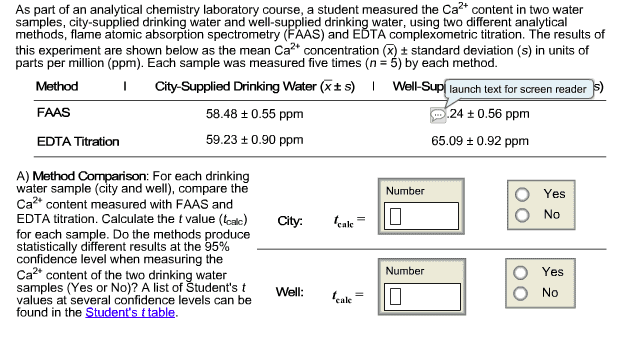CHMB16H3 Chapter Notes - Chapter 5: Standard Operating Procedure, Titration, Electropherogram
Document Summary
Basics of quality assurance: quality assurance: what we do to get the right answer for our purpose, raw data: individual values of a measured quantity. False positive: says that the result is over but it is actually under. Method blank: a sample containing all components except analyte and it is taken through all steps of the analytical procedure. Reagent blanks: similar to a method blank, but it has not been subjected to all sample preparation procedures. Cunspiked sample / cadded x 100): calibration checks: we analyze solutions formulated to contain known, quality control samples: help eliminate bias introduced by an analyst concentrations of analyte. who known the concentration of the calibration check sample. Standard operating procedures: stating what steps will be taken and how they will be carried out are the bulwark of quality assurance. To gauge accuracy, calibration checks, fortification recoveries, quality control samples and blanks are used.



